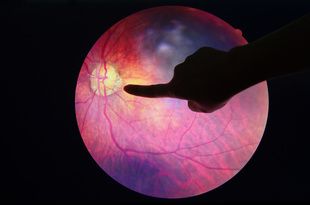Article
Eating Behaviors May Help Physicians Diagnose Autism, Penn State Study Finds
Author(s):
Unusual eating behavior can be seen in 70% of children who have autism, and it is so characteristic of this group that hypersensitivity to food textures or temperatures can be a reason for parents to look into an autism diagnosis, according to new research from Penn State College of Medicine.
Unusual eating behavior can be seen in 70% of children who have autism, and it is so characteristic of this group that hypersensitivity to food textures or temperatures can be a reason for parents to look into an autism diagnosis, according to new research from Penn State College of Medicine.
Susan D. Mayes, PhD, a professor of psychiatry at the college, found that unusual eating behaviors were 15 times more common than is the case in neurotypical children. These behaviors include children fixating on a singular food, refusing to add new foods to their diet as they get older, or pocketing food.
“If a primary care provider hears about these behaviors from parents, they should consider referring the child for an autism screening,” Mayes said in a statement.
For the study, which appears in the August issue of Research in Autism Spectrum Disorders, Mayes and her colleagues assessed eating behaviors based on interviews with parents who had taken part in 2 different studies in which licensed psychologists had used the Checklist for Autism Spectrum Disorder.
The total sample covered 2102 children; 1462 had autism and 327 had other disorders, such as attention-deficit/hyperactivity disorder, an intellectual disability, or a language disorder. There were also 313 neurotypical children. All were aged between 1 and 18 years; the mean age was 7.3 years.
Results showed that atypical eating behaviors were seen in 70.4% of the children with autism compared with 13.1% of children with other disorders and 4.8% of children without a diagnosis.
The most common behavior among children with autism was limited food preferences (88%), followed by hypersensitivity to texture (46%). Grain products and chicken nuggets were the most common preferred foods among children with autism (92%).
The practice of pocketing food was only seen among children with autism (19%), as was pica (12%), the practice of eating nonnutritive substances such as dirt, hair, or plastic.
Concerns about eating habits are not new among parents of children with autism. Blogs that cater to parents air their frustrations, and a 2013 meta-analysis found that feeding problems and concerns about nutrient intake, including low levels of protein and calcium, were a significant issue in this population. But that study stopped short of stating that eating issues on their own could be a reason to explore an autism diagnosis.
Mayes’ study, by contrast, finds that the behaviors themselves should be a red flag for referral. Among the findings: A quarter of parents reported their children would stick with a single brand of food (27%). Among children with autism who had atypical eating behaviors, 25% had 3 or more. But none of the other children had 3 or more eating disorders.
The authors concluded that both the number and the types of atypical eating behaviors found only in children with autism—but not in children with other disorders or typical development—should be a signal to family doctors that autism is a possibility.
“When we evaluate young children with multiple eating problems, we start to wonder if these children might also have the diagnosis of autism,” Keith Williams, PhD, director of the Penn State Children’s Hospital Feeding Program, said in a statement. It’s important to identify the cause of the behavior so it can be corrected, because odd diets don’t have the nutrients to sustain children, he said.
The sooner children are referred for evidence-based treatment, the better, Mayes and co-author Hana Zickgraf, PhD, wrote.
Reference
Mayes SD, Zickgraf H. Atypical eating behaviors in children and adolescents with autism, ADHD, other disorders, and typical development. Res Autism Spectr Disord. 2019;64:76. doi: 10.1016/j.rasd.2019.04.002.

